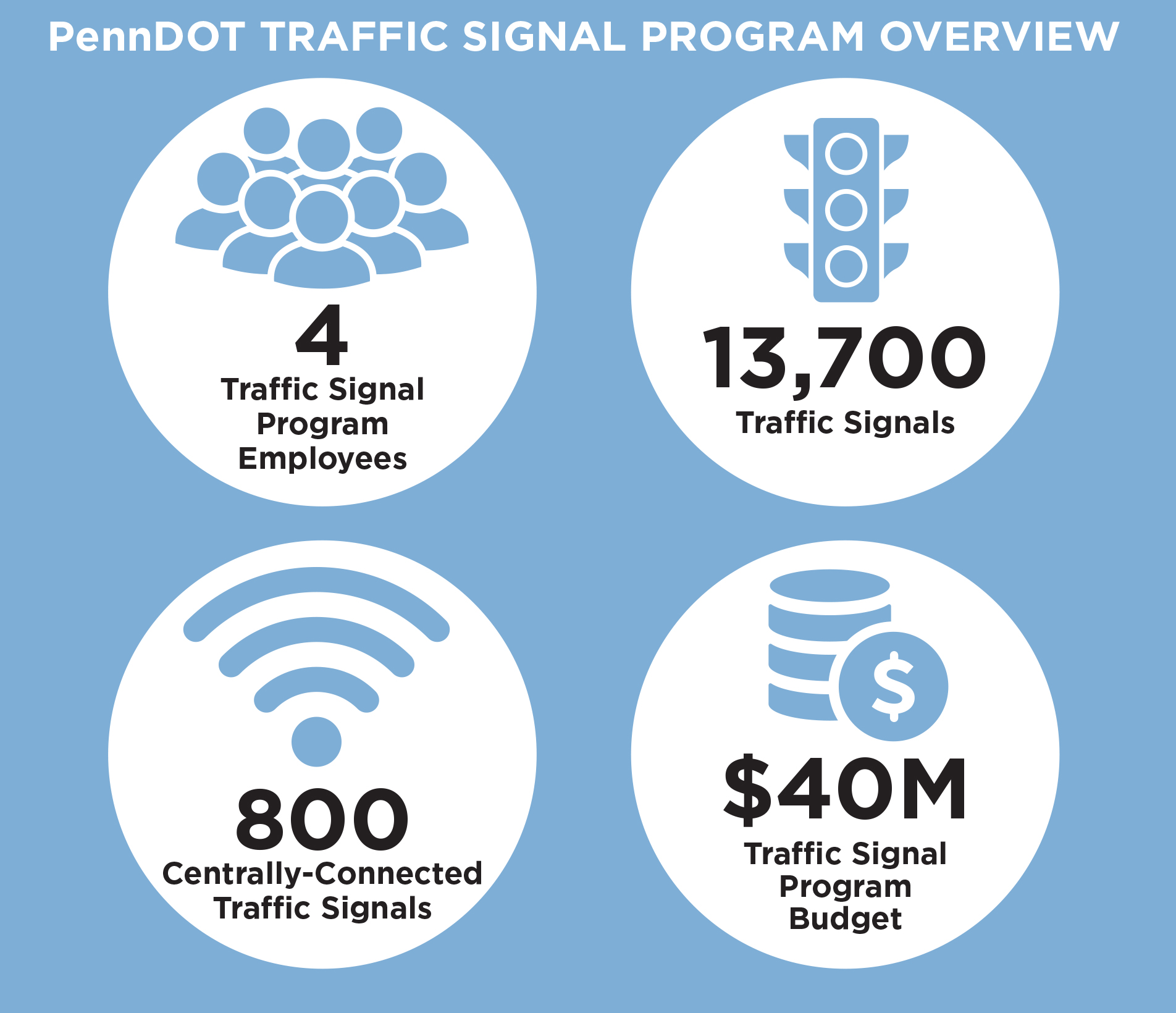Automated Traffic Signal Performance Measures (ATSPMs)

There are nearly 14,000 traffic signals operated by a multitude of local municipal agencies across Pennsylvania. Although best practices are to retime signals every three to five years, the interval between retiming is typically much longer in Pennsylvania due to resource limitations. In most cases, retiming only occurs reactively in response to complaints or new land development. The effectiveness of the traditional retiming process is limited by labor-intensive data collection which only covers a short time period. Automated Traffic Signal Performance Measures (ATSPMs), a
Federal Highway Administration (FHWA) Every Day Counts Round 4 (EDC-4) innovation that Pennsylvania championed, enables a more proactive approach to traffic signal performance management.
How Does It Work?
When agencies conduct signal retiming, signal performance is evaluated through a comparison of limited before and after travel-time data to demonstrate signal performance. Where there is no ongoing performance measurement capability, agencies must often rely on citizen complaints to detect maintenance or operational deficiencies. This lack of data compromises safety and efficiency and contributes to congestion. ATSPMs consist of high-resolution data-logging capability added to existing traffic signal infrastructure and data analysis techniques. This provides engineers with the information needed to proactively identify and correct deficiencies. Better management of traffic signal maintenance and operations help support PennDOT’s safety, mobility and environmental goals.

July 2023
What Are The Benefits?
ATSPMs can significantly reduce the need for expensive manual data collection to quickly deploy improved traffic signal timing. Poorly timed traffic signals are the most significant contributor to traffic congestion on arterial roadways. Analyzing the operation of traffic signals helps PennDOT and local governments improve the flow of traffic and reduce congestion to move people and goods more safely and efficiently. Benefits of using ATSPMs include:
- Reduced delays, emissions, and fuel consumption
- Reduced crashes and fatalities
- Targeted maintenance
- Improved data collection
- Better regional and multi-jurisdictional collaboration
- Reduced motorist frustration
July 2023
Innovation In Motion
PennDOT received $60,000 in STIC Incentive Program funding for ATSPMs in 2021. This funding will be used to procure a vendor software that has the capability to flag anomalies in various performance measures as a pilot to determine whether having this functionality in software can minimize staff resources and provide effective improvements to traffic flow. The pilot will include intersections that are already connected to the PennDOT network and have controllers and detection capable of collecting ATSPMs data.
More Information
For more information about this innovation, contact the STIC Management Team.